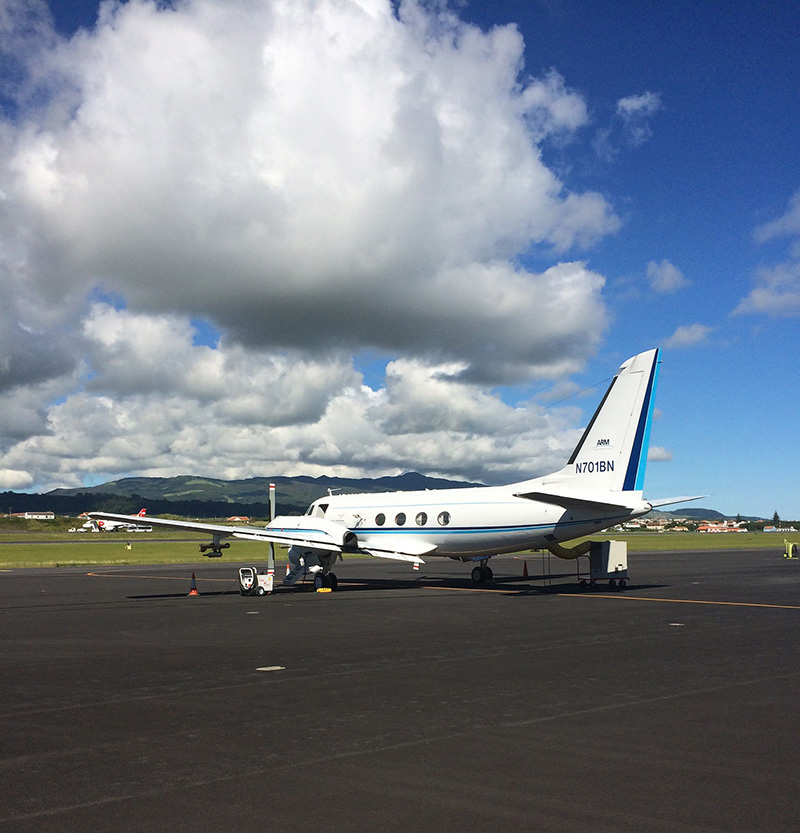
Eos highlights recent ASR-supported research
When gases from the ocean rise into the atmosphere, it is not quite clear how they might influence cloud properties. Looking for some clarity, researchers analyzed aircraft data collected over the eastern North Atlantic Ocean by the Atmospheric Radiation Measurement (ARM) user facility.
What became evident to the scientists was a new potential approach to investigate the effects of marine gases on cloud formation.
Eos, an American Geophysical Union (AGU) science magazine, featured the study as a February 2022 “Research Spotlight.” The study first appeared online in November 2021, published by the AGU journal Earth and Space Science.
The paper’s lead author is Mark Miller, a professor of atmospheric science at Rutgers University in New Brunswick, New Jersey. Miller and four of his co-authors acknowledged funding from the U.S. Department of Energy’s Atmospheric System Research (ASR).
Miller’s team looked at how a chemical called dimethyl sulfide (DMS) might affect the size and concentration of cloud droplets. Emitted from marine algae and phytoplankton, DMS can produce cloud condensation nuclei—particles on which water vapor condenses to form cloud droplets.
The team used data from ARM’s Aerosol and Cloud Experiments in the Eastern North Atlantic (ACE-ENA) field campaign. ACE-ENA aimed to improve understanding of marine low clouds and aerosols in a remote environment.
Miller was a co-investigator for ACE-ENA, which took place in the Azores island chain west of mainland Portugal.
Digging into the Data
ACE-ENA combined ground-based data from ARM’s Eastern North Atlantic atmospheric observatory with measurements taken via ARM’s Gulfstream-159 (G-1) research aircraft. (Get ACE-ENA data from the ARM Data Center.)
Specifically, Miller’s team analyzed ACE-ENA data from 19 G-1 flights in June and July 2017. (The G-1 also gathered data for ACE-ENA in January and February 2018.)
The aircraft data showed a “weak but statistically significant positive correlation” between DMS and the size of cloud droplets, according to the Eos highlight. However, researchers did not see a correlation between DMS and the number of cloud particles.
Because research flights are limited in number, the paper’s authors recommended a different experimental design for future studies of marine gases and cloud formation. In addition to using aircraft data, the team suggested continuous measurements of gases at the ocean’s surface and monitoring of cloud structure.
# # #This work was supported by the U.S. Department of Energy’s Office of Science, through the Biological and Environmental Research program as part of the Atmospheric System Research program.

